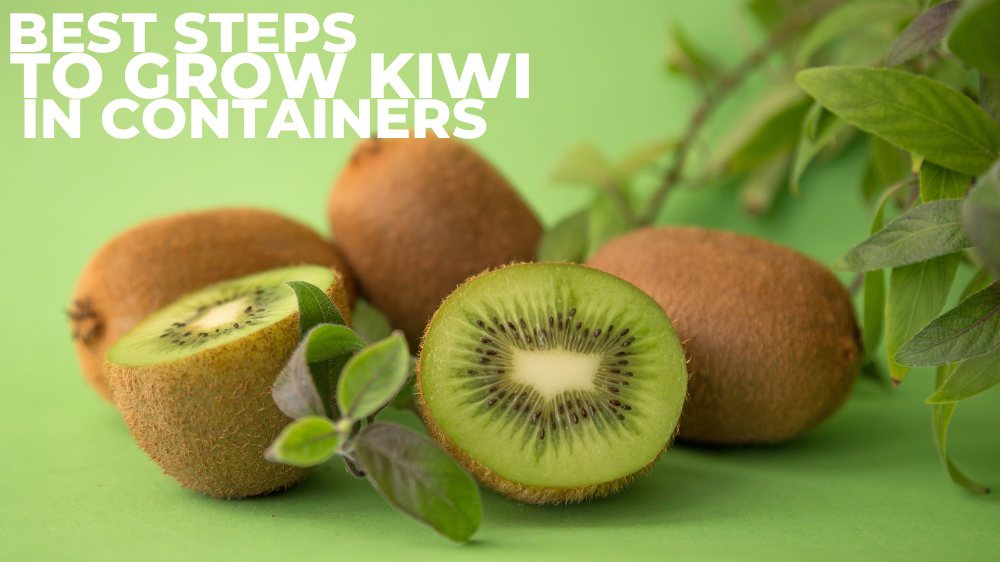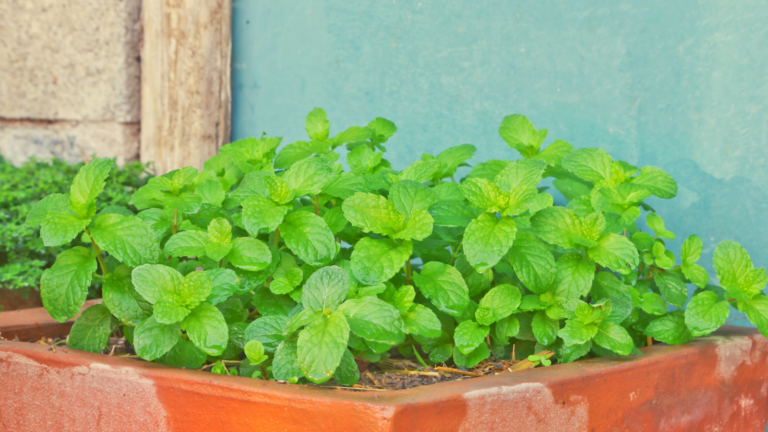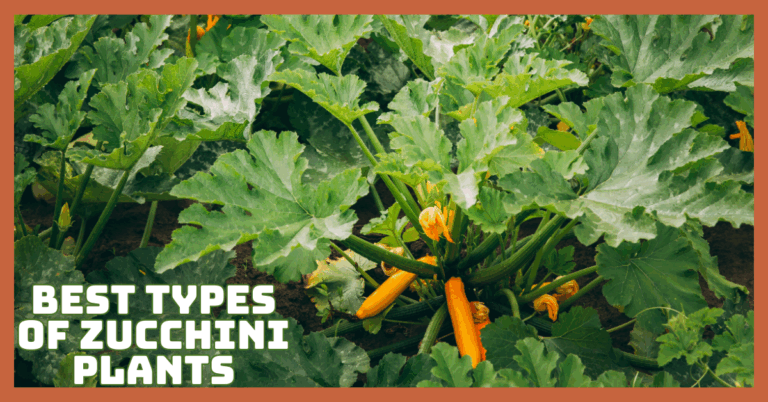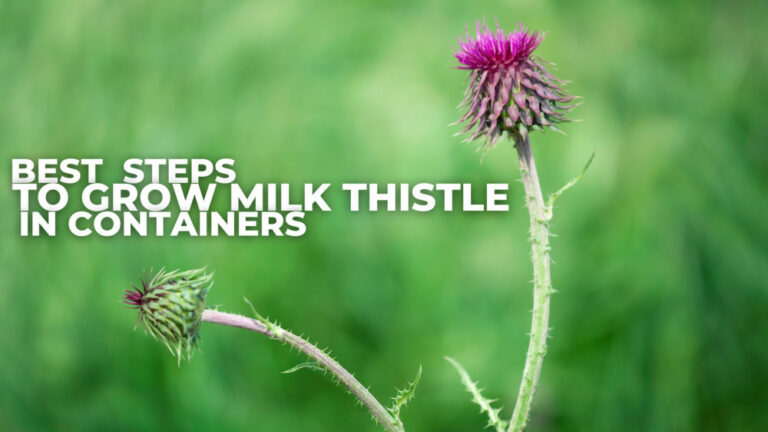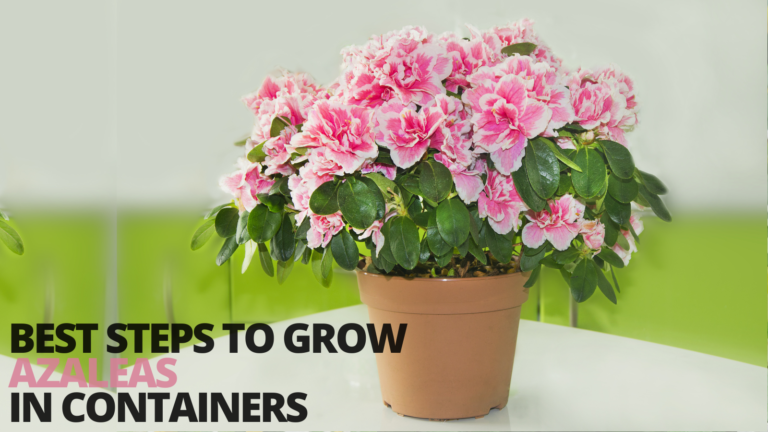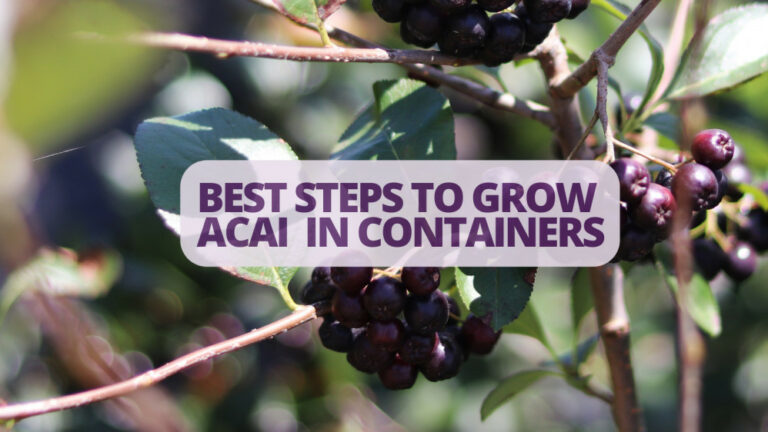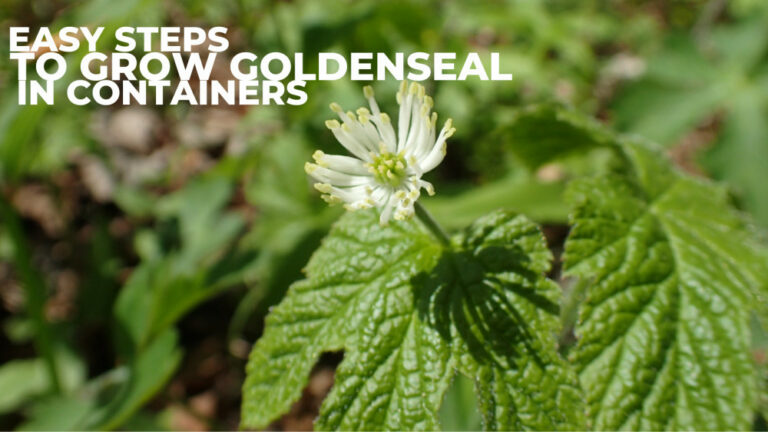Best Steps To Grow Kiwi In Containers
Best Steps To Grow Kiwi In Containers
Hardy kiwis, also known as baby kiwis, have smooth skin, grow in clusters, and are smaller and sweeter than the fuzzy kiwis seen in grocery stores (Actinidia arguta, USDA zones 3-8, and Actinidia kolomikta, USDA zones 4-8), according to the Missouri Botanical Garden.
An excellent option to suit the plant's requirements for adequate drainage, somewhat acidic soil, heavy pruning, and abundant water during the growing season is to grow kiwi fruit in pots.
But can this be grown in a backyard garden? Yes! Everything you need to know about growing kiwi in containers is provided here.
History & Origin Of Kiwi
Kiwi (Actinidia deliciosa), often known as kiwifruit or Chinese gooseberry, is an edible fruit that grows on a woody vine in the Actinidiaceae family.
The plant is indigenous to Taiwan and mainland China and is produced commercially in California and New Zealand.
The fruit can be eaten raw or cooked with a little acidic flavour. The juice can occasionally be used to tenderize meat. Vitamin C and K levels in raw kiwis are high.
Because kiwi vines are dioecious, the male and female flowers develop on different individuals.
Three to eight female plants can be pollinated by one male plant. The ellipsoidal kiwi fruit has a hairy brownish-green skin and is a real berry.
Numerous tasty purple-black seeds are embedded throughout the complex, transparent green flesh, which also has a white center.
Young leaves are covered with reddish hairs, and deciduous leaves are borne alternately on long petioles (leaf stalks).
For its fruits, a variety of additional species are also farmed. Commercially farmed in some regions, the golden kiwi (Actinidia chinensis) has fewer hairs and yellower, sweeter flesh than A. deliciosa.
The Chinese egg gooseberry (A. coriacea), red kiwi (A. melanandra), silver vine (A. polygama), purple kiwi, and two cold-hardy species (A. arguta and A. kolomikta) are among the other kiwi species (A. purpurea).
Types Of Kiwi
There are numerous variations with different tastes. You must know about the best varieties to grow kiwi in containers perfectly.
1. Green Kiwi
The most popular Kiwi is the green one. The skin is oval-shaped and has a fuzzy brown colour. Black seeds are embedded in the green interior of the meat.
The taste of the green kiwi is acidic but sweet. High in fiber is this kiwi. You may buy green kiwifruit whenever possible because it is produced all year round.
2. Issai Kiwi
Unique to Japan, the Issai Kiwi variety is self-fertile. It can produce fruit without the help of a male plant to pollinate it.
The fruit grows in attractive, compact clusters. The large, sweet fruit is delicious. This variety can grow on a wall or a fence because it doesn't grow quickly.
3. Ken’s Red Kiwi
Ken's Red Kiwi is known as Actinidia purpurea x melanandra in Latin. This particular kiwi variety bears the name of its inventor.
This kiwi produces a wonderful crop of big, sweet fruits. This kiwi's skin and flesh are both purple-red hue.
4. Golden Kiwi
Actinidia chinensis, also referred to as the golden kiwi It is related to green kiwis. It appears smoother since the outside of it has fewer hairs. Golden brown is the hue of the skin's outer layer. There are fewer seeds and vivid yellow flesh.
On the outside, there is a little core. The golden or gold kiwifruit flavour is more tropical and resembles a cross between a strawberry and a mango. People prefer to pick up and eat this gold kiwi like an apple because its outside is hairless.
Compared to the green kiwi, the golden kiwi is softer. Some people might find the golden kiwi mushy, but it is simpler to chew and has a ripe flavour. From May until January, the golden kiwifruit is in season.
5. Rossana Italian Kiwi
Italy is where you can find this kind of Kiwi. It is regarded as superior quality. The Rossana Italian kiwi has a crop that yields and bears lots of fruit. It tastes sweet and has a fruity aftertaste.
6. Hardy Kiwi
Actinidia arguta and Actinidia kolomikta are two names for the hardy kiwi. A close relative of the kiwi vine that yields the kiwi you'll probably see in your neighbourhood grocery store is the hardy kiwifruit.
Colder conditions are no match for this vine. The kiwi is smaller in this variation. They can be eaten whole without needing to be peeled.
These vines must be controlled because they spread and encroach on plants and trees. The resilient kiwi blooms in the spring but bears fruit in the fall. The majority of hardy kiwis have separate male and female plants.
They thrive when planted in the spring after the threat of frost has passed. The Hardy Kiwi benefits from a full day of sunshine and well-draining soil. There are numerous varieties of hardy kiwis.
7. Fuzzy Kiwi
Actinidia deliciosa is the fuzzy kiwi's scientific name in Latin. The vine, a native of Southern China, has been designated as the country's national fruit. The Fuzzy Kiwi's skin is a rusty brown hue akin to a russet potato's.
The kiwi has short, stiff brown hair that covers its entire body. The flesh gleams and is firm. It is tasty and juicy.
The flesh can also be brown, white, or yellow but is typically a bright green colour. The flavour may have an acidic aftertaste.
8. Arctic Beauty Kiwi
The Arctic Beauty kiwi's scientific name is Actinidia kolomikta. One of the cold-tolerant varieties of kiwi is Arctic Beauty.
The coldest temperatures are no match for it. The tough fruit, Arctic Beauty, has lovely pink and white leaves that stand out in the landscape.
Arctic Beauty's kiwi fruit is smaller than those of wide other varieties. They have a delicious, sweet flavour. Almost any soil will support fruit production in the Arctic Beauty kiwi.
They require a male plant to be pollinated to bear fruit. They require training, a lot of water, and direct sunlight. In the spring, this variety of kiwi leaves are green, but at the tips, they turn white and pink.
9. Anananzaya Kiwi
The Latin name Actinidia arguta, also used for this Kiwi, is Anna. The skin colour of this variety of kiwi ranges from green to purple.
The fruit has a pleasing aroma. It tastes pretty sweet. This specific kiwi will grow in almost any soil and prefers both full sun and some shade.
This type of kiwi can weigh up to half an ounce. They are dependable and straightforward to grow.
10. Dumbarton Oaks Kiwi
Actinidia arguta is the kiwi's scientific name in Latin. The Dumbarton Oaks Kiwi is a distinctive variety of kiwi with light green skin that seems ribbed and like a small pumpkin.
They taste delicious and sweet. Usually, a medium-sized fruit is present. The vines on the Dumbarton Oaks kiwi grow swiftly.
This kiwi's skin is smooth because it lacks the fuzzy hair you often observe on kiwis. Like grapes, they can be eaten whole.
The kiwi in this kind is sweeter and simpler to consume. Additionally smooth, the vines require assistance to develop appropriately.
How To Grow Kiwi In Containers
Although they are warm-weather fruits, kiwis are pretty simple to produce at home, which is sad because most people would never consider attempting.
Smooth-skinned, smaller kinds like Annas or Issai thrive in containers and yield fruit sweeter than the fuzzy ones you find at the store.
Once your kiwi plants are established, it will take them a few years before they begin to bear fruit, but once they do, they will continue to grow and provide fruit for the next 40 years.
Mature plants can yield 50 pounds of fruit per season. Now is the ideal beginning moment, so let's discover how to grow kiwi in containers.
Choose The Right Container
Pick a decorative pot size of a 15-gallon container, such as a ceramic jar or a wooden half barrel, for growing the resilient kiwi on patios.
Check for drainage holes in the container. If the potting mix doesn't already contain peat, add some peat to make it slightly more acidic.
Every gardener's to-do list should include growing kiwi fruit! Kiwi fruit can also be grown in containers. These grow bags, with a capacity of 45 gallons, are ideal for growing kiwi vines.
Soil To Grow Kiwi In Containers
Buy a potting mixture devoid of soil that contains at least a third organic material. Kiwis do not like standing water, so ensure the potting mix has good drainage.
Add organic fertilizer to the potting soil, such as bone meal or thoroughly composted manure. Kiwis grow best in sandy loam soils that are deep, rich and well-drained.
Maximum production is achieved when soil pH is slightly below 6.9; however, higher pH levels up to 7.3 negatively impact yield.
Kiwi plants prefer slightly acidic soil. Fertilize basic soil in early March and provide a couple of extra, properly spaced treatments during the growing season.
Sunlight
Best cultivated under protection in chilly areas or trained against a sunny, protected south or west-facing wall. Kiwis grow well in full sun in warmer climates as long as their roots receive midday shade.
Watering
You won't need to use the hose if summer rainfall averages around an inch every ten days.
You should water your plants (approximately a gallon per plant, comparable to about an inch of rainfall) every seven to ten days if rainfall is scarce or your location is experiencing a drought.
Throughout the growing season, kiwi fruit plants require a lot of water and well-drained soil. It's imperative to water frequently in the summer heat. Don't ever subject a plant to drought stress.
Planting
Once you have gathered all the required materials, you can begin planting.
- Your potting mix and fertilizer should fill your potting containers about two-thirds of the way.
- Your kiwi plant should be taken out of the nursery container.
- Put a male and a female plant on either side of the kiwi that is in the middle. Both are necessary for fruit growth and successful pollination.
- Soil should fill the pot up. To allow for watering, ensure enough space between the top of the soil and the top of the pot.
- Place pots close to a trellis. Similar to how you would with a tomato plant, you might need to use a stake to promote development toward the trellis.
Propagate Kiwi
Seeds can be used to grow kiwis. This is how:
- A mature kiwi's seeds should be removed and let dry for two days.
- The seeds should be stored in a container with wet perlite in the refrigerator for two months at 40°F (4°C).
- Place the seeds in a moist, sterile potting mix 1/8 inch deep, then wrap the container in plastic.
- Keep the soil moist, and place the container in a warm, sunny location.
- Uncover the container once the seedlings begin to grow.
- Transplant the plants into separate pots after they have four genuine leaves.
- Transplant the plants outside after they are several inches tall.
- Softwood cuttings (cuttings made from fresh growth throughout the summer) can also be used to propagate kiwis:
- Kiwi should be cut into six-inch lengths, with the growing tip removed.
- Place the clippings in a glass with an inch of water.
- The cuttings will sprout little roots at their ends in approximately 3 weeks.
- Plant the cuttings outdoors or in pots.
Fertilizer
Once established, kiwis will grow actively and need regular fertilization. But if you use fertilizers excessively, the roots could get sensitive and burn off.
As suggested on the label, 2-3 times a year will be more than enough when using a time-based balanced granular fertilizer like 16-16-16.
Nitrogen is constantly required in the early spring when the plant grows again. For additional nitrogen, ammonium nitrate and urea are recommended.
Also suggested is a general-purpose 10-10-10 fertilizer. You can apply a liquid or granular fertilizer, but take care not to burn the plant.
Pruning
The most challenging step for many individuals cultivating kiwi fruit is pruning.
When the vines are dormant in the winter, and twice or three times throughout the summer, they must be pruned with a sharp pair of high-quality pruners.
Remove branches that bore fruit the previous year and dead or crossed during the winter pruning season.
Don't remove the one-year-old branches; cut them back to the eighth node from the plant's base because they bear the most fruit (the nodes look like little nubs along the branch).
In the spring, these nodes will release fresh fruiting spurs. Summer pruning entails cutting back tall, arching vines past the maturing fruit.
The non-flowering vines that protrude from the trellis can also be cut back in the summer.
Care Of Kiwi
Kiwis thrive in the whole light and enjoy being warm. Try placing them near a south or west-facing wall if you live in a great location to maximize warmth.
They can also be kept indoors close to a window that faces south. 3–4 times a week, give your plant a couple of inches of water.
Here, your soil must drain well, or else your kiwis will get root rot. You should trim each branch's new growth every few weeks by roughly half.
This promotes flower growth, which is essential for pollination and encourages plants to grow more bush-like.
Once a month during the summer growing season, fertilize your kiwi plants. To prevent breaking, teach your kiwis how to use the trellis you have supplied.
Pests & Diseases Of Kiwi
Kiwifruit is sensitive to bacterial bloom blight, oak root fungus, and Phytophthora; thus, avoid planting them in moist soil (root rot).
Additionally, watch out for bleeding canker, a disease that the kiwi plant is susceptible to during chilly winters.
Please be advised that growing kiwis may be challenging if you do not reside in a warm environment.
When cultivating or transferring kiwi plants indoors, place them in a warm location with lots of sunlight.
Since kiwi plants need at least 6 to 8 hours of sunlight daily, a south-facing window would be optimal.
Let's start so you may enjoy this delicious tropical fruit all year long now that you know how to grow kiwi in containers!
Harvesting Of Kiwi
The fruit usually matures around September or October, when it may be vulnerable to early fall frosts in some regions.
Fruit should be picked when tender to the touch and ready for consumption. Alternatively, kiwi fruits can be harvested when solid but have black seeds if early fall frosts are problematic.
These fruits can be kept in the refrigerator for up to six weeks. Before eating, remove it from the fridge and let it soften for a few days.
Conclusion
Although they are warm-weather fruits, kiwis are quite simple to grow at home, which is unfortunate because most people would never consider trying.
Smooth-skinned, smaller varieties like Annas or Issai thrive in containers and yield sweeter fruit than the fuzzy ones you find at the store.
Once your kiwi plants are established, it will take them a few years before they begin to bear fruit, but once they do, they will continue to grow and bear fruit for the next 40 years. Mature plants can yield 50 pounds of fruit per season.
I trust you enjoyed this article on the Best Steps To Grow Kiwi In Containers. Please stay tuned for more blog posts to come shortly. Take care!
JeannetteZ
>>>Please click here to read my all-inclusive article about Container Gardening<<<
>>>Are you interested in homegrown herbs and medicine? Please click here to find out more about it!<<<
Your Opinion Is Important To Me
Thoughts? Ideas? Questions? I would love to hear from you. Please leave me your questions, experience, and remarks about this article on the Best Steps To Grow Kiwi In Containers in the comments section below. You can also reach me by email at Jeannette@Close-To-Nature.org.
Disclosure
This post may contain affiliate links. As an Amazon Associate and other affiliate programs, I earn from qualifying purchases at no extra cost to you. Read my full affiliate disclosure.
You might also enjoy these blog posts:
Best Steps To Grow Asparagus In Containers
Best Steps To Grow Brussels Sprouts In Containers
Best Steps To Grow Bok Choy In Containers
Best Steps To Grow Oranges In Containers
Best Steps To Grow Turmeric In Containers

